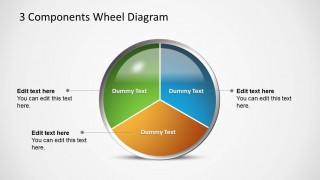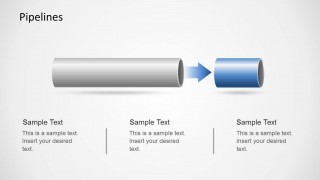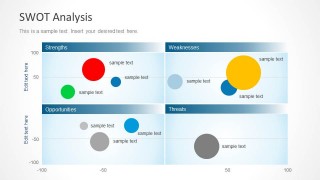Learn more how to embed presentation in WordPress
- Slides
- 13 slides
Copy and paste the code below into your blog post or website
Copy URL
Embed into WordPress (learn more)
Comments
comments powered by DisqusPresentation Slides & Transcript
Presentation Slides & Transcript
An electrocardiogram, or ECG (or EKG) is a recording of the electrical changes in the myocardium during the cardiac cycle.
Electrocardiogram
Section 3, Chapter 15
P Wave
Represents atrial depolarization
Leads to atrial contraction
Conduction of electrical impulse from right to left and downward
QRS Complex
Represents depolarization of ventricles
Leads to ventricular contraction
This massive wave hides the atria repolarization
Electrocardiogram
T Wave
Represents repolarization of ventricles
Electrocardiogram
Figure 15.22d. An ECG pattern with the corresponding systole and diastole shown above.
ECG of a regular heart rhythm at 75 beats per minute
Atrial Flutter. Atria fire 250-350 times per minute. For every QRS complex there may be 4 or more P waves.
Heart Arrhythmias:
normal
Bradycardia – cardiac rhythm less than 60 beats per minute.
Tachycardia– cardiac rhythm greater than 100 beats per minute.
Examples of Heart Arrhythmias. Arrows indicate p Wave.
Atrial fibrillation. Instead of contracting, the atria become quivering chambers. The ventricles respond only to impulses that make it to the AV node.
Ventricular fibrillation = Life threatening arrhythmia. Ventricles quiver, and are unable to pump blood properly. Requires immediate defibrillation.
Examples of Heart Arrhythmias, fibrillation
The heart rate is controlled intrinsically by the SA node, but sympathetic and parasympathetic fibers alter the rate at which the pacemaker fires.
Regulation of cardiac cycle
Cardioinhibitor reflex center
Parasympathetic fibers from vagus nerves innervate SA & AV nodes.
Acetylcholine (ACh) released from fibers decreases the firing rates of SA & AV nodes.
Heart rate decreases
Cardioaccelerator reflex center
Sympathetic fibers from accelerator nerves innervate SA & AV nodes.
Norepinephrine released from fibers increases the firing rates of SA & AV nodes.
Heart rate and force of contraction increases
Cardioinhibitor & cardioaccelerator reflex centers alter the heart rate in response to sensory impulses from receptors
Baroreceptors – monitor blood pressure
Within aortic arch and carotid sinuses
Rising blood pressure stimulates cardioinhibitor center
`
Figure 15.24b Illustration of the baroreflex arc
End of Section 3, Chapter 15
More Presentations

By longwaytothetop2
Published Jan 11, 2013

By longwaytothetop2
Published Jan 11, 2013

By longwaytothetop2
Published Jan 11, 2013

By longwaytothetop2
Published Jan 11, 2013

By longwaytothetop2
Published Jan 11, 2013

By longwaytothetop2
Published Jan 11, 2013

By longwaytothetop2
Published Jan 11, 2013

By longwaytothetop2
Published Jan 14, 2013





